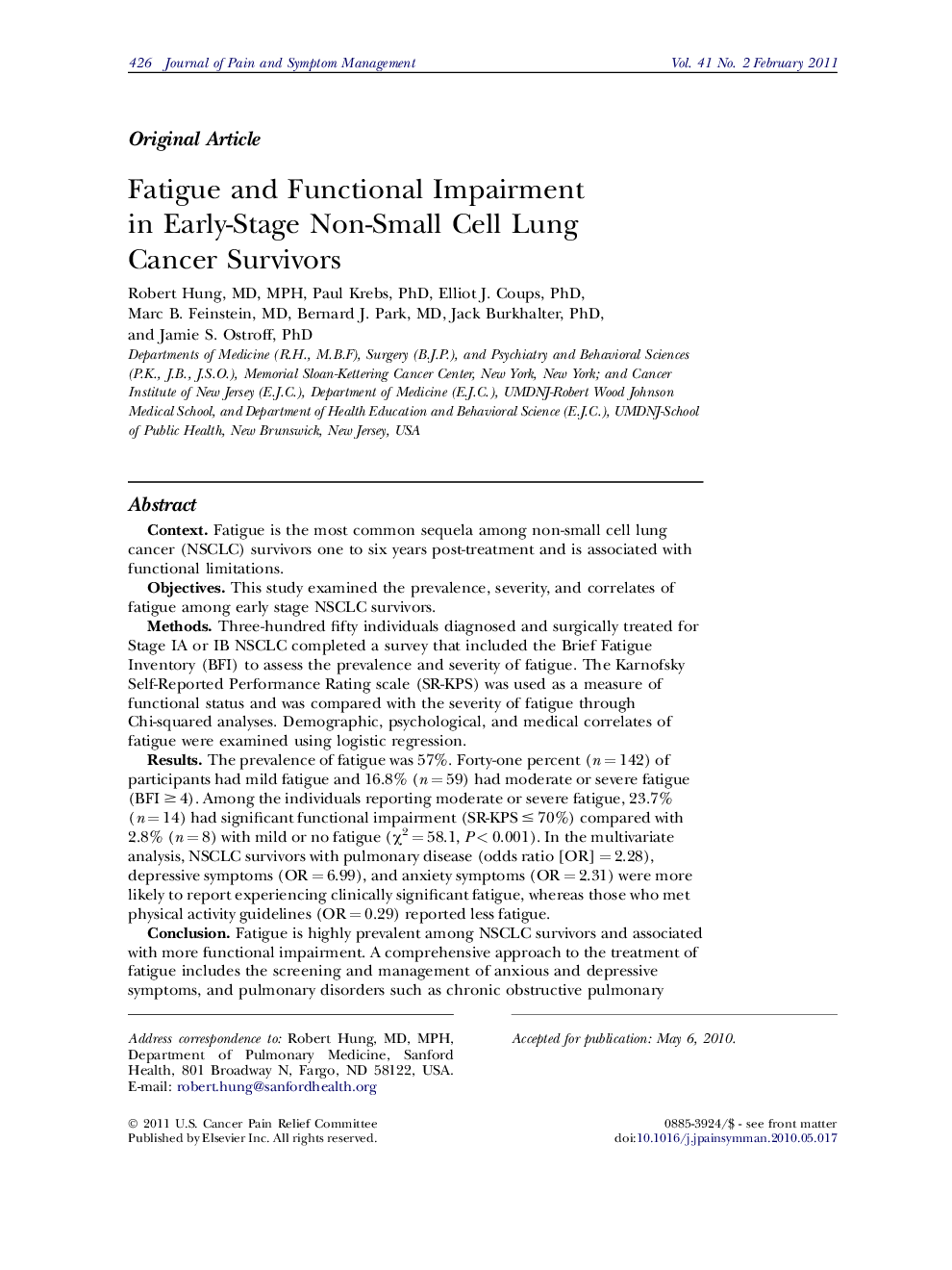| Article ID | Journal | Published Year | Pages | File Type |
|---|---|---|---|---|
| 2736176 | Journal of Pain and Symptom Management | 2011 | 10 Pages |
ContextFatigue is the most common sequela among non-small cell lung cancer (NSCLC) survivors one to six years post-treatment and is associated with functional limitations.ObjectivesThis study examined the prevalence, severity, and correlates of fatigue among early stage NSCLC survivors.MethodsThree-hundred fifty individuals diagnosed and surgically treated for Stage IA or IB NSCLC completed a survey that included the Brief Fatigue Inventory (BFI) to assess the prevalence and severity of fatigue. The Karnofsky Self-Reported Performance Rating scale (SR-KPS) was used as a measure of functional status and was compared with the severity of fatigue through Chi-squared analyses. Demographic, psychological, and medical correlates of fatigue were examined using logistic regression.ResultsThe prevalence of fatigue was 57%. Forty-one percent (n = 142) of participants had mild fatigue and 16.8% (n = 59) had moderate or severe fatigue (BFI ≥ 4). Among the individuals reporting moderate or severe fatigue, 23.7% (n = 14) had significant functional impairment (SR-KPS ≤ 70%) compared with 2.8% (n = 8) with mild or no fatigue (χ2 = 58.1, P < 0.001). In the multivariate analysis, NSCLC survivors with pulmonary disease (odds ratio [OR] = 2.28), depressive symptoms (OR = 6.99), and anxiety symptoms (OR = 2.31) were more likely to report experiencing clinically significant fatigue, whereas those who met physical activity guidelines (OR = 0.29) reported less fatigue.ConclusionFatigue is highly prevalent among NSCLC survivors and associated with more functional impairment. A comprehensive approach to the treatment of fatigue includes the screening and management of anxious and depressive symptoms, and pulmonary disorders such as chronic obstructive pulmonary disease.
